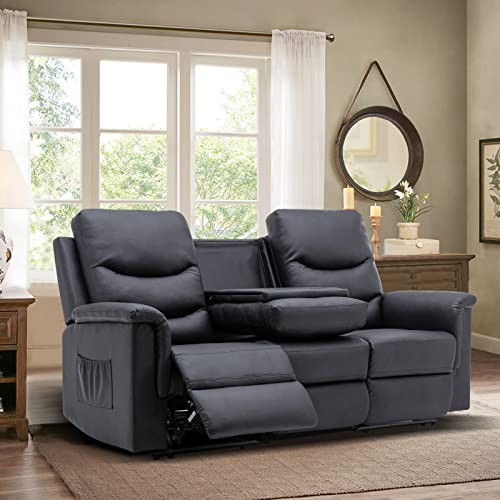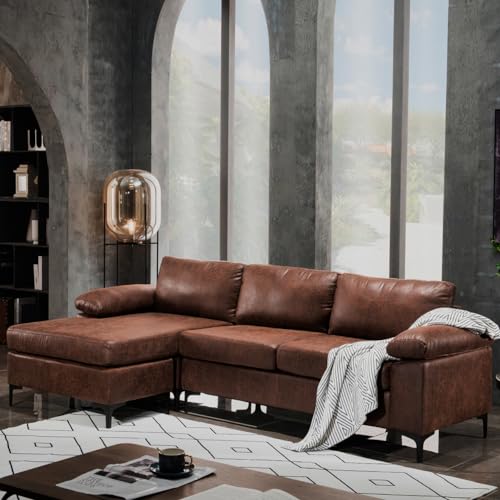10 Top Mobile Apps For Genuine Leather Sofa
페이지 정보
작성자 Zelma 작성일24-11-13 03:00 조회3회 댓글0건관련링크
본문
 How to Spot a Genuine leather sofas for sale near me Sofa
How to Spot a Genuine leather sofas for sale near me Sofa This sofa is a great option for any room. Its leather upholstery is incredibly soft. Customers adore its simple styling and high-quality, genuine leather upholstery.
This sofa is a great option for any room. Its leather upholstery is incredibly soft. Customers adore its simple styling and high-quality, genuine leather upholstery.Untrained eyes might have trouble identifying the difference between real and faux leather. Here are six tips to help you distinguish between the two: 1. The rough edges.
1. Labels are crucial
Real leather has a distinct look and feel that's hard to replicate. It's also durable and easy to clean. It also doesn't absorb excess body oils, making it ideal for families with allergies. However there are many different leather sofas that are made to be the same. In fact, some retailers have even been known to disguise PVC as genuine leather.
To avoid being ripped off, it's important to know the various types of leather. This includes determining the differences between full grain and top grain leather, and also assessing the quality of the upholstery material. Retailers with discerning eyes are more than happy to provide you with this information, so don't hesitate to inquire!
To identify a genuine leather sofa, you must first examine the label. It should clearly state what kind of leather it is covered in, as well as any other materials such as cotton or fabric. In addition, reputable sellers will have clear policies regarding returning or exchanging items in the event you aren't happy with your purchase.
If the sofa doesn't have a label you can still confirm its authenticity by examining the fabric backing of the sofa or opening the cushion casing. You can also look at the texture of the leather to determine whether it has any flaws or bumps as these are telltale signs that you're dealing with fake or the leather is bonded.
Another method to determine the authenticity of a sofa is by the surface of the sofa using your fingertips. Genuine leather has a soft, smooth texture. Faux leather or bonded leather is rougher and feels more like suede. You should also be able discern the difference between bumps, wrinkles, and printed patterns of faux leather and genuine leather.
While a genuine leather sofa will cost more than its imitation counterpart but it's an investment that will last longer and often become family heirlooms over the years. You can reduce the damage that's caused by sun or ozone, heat, humidity by placing your leather sofa in a cool, dark area away from heaters, fireplaces and air conditioning. Creams for protection on leather can be used to keep your leather sofa strong and supple.
2. Take a look at the back
If the label doesn't tell you what type of leather is in a sofa, it's crucial to look it up close. The scent, the texture and the backing will be unmistakable indicators of authenticity.
Genuine leather will not feel smooth when you contact it. This is because animal hides come with a variety of pores that allow them to breathe. A product that feels completely smooth may be fake leather.
Another thing to look for is bumps or an uneven surface. The process of making genuine leather includes buffing, which eliminates some of the rough outer skin. If the material covering your sofa is top grain leather, there should still be some bumps.
You can also test the leather by running your finger over it and pressing into it. If it's genuine the leather will stretch and wrinkle a little, just like human skin. This means it's able to breathe, ensuring that the material doesn't become dry and crack with time.
Faux l shape leather sofa is uniform in pattern because it is printed, however genuine leather will have imperfections that contribute to the beauty and durability of the leather. This includes scratches and creases. A genuine leather sofa is soft and a bit stiff when new, but it should not crack or dry out over time if it is regularly maintained with a specific leather protection cream.
To save money, certain furniture manufacturers make use of a mix of real and synthetic leather to create their furniture. The contact areas, like the arm rests, seats and backs are made from genuine leather, while the non-contact areas, like the base and outside arms, are covered with polyurethane, which is less expensive or a synthetic leather. Even if the sofa is labeled as genuine leather, you should examine the back to determine if it's genuine leather.
Labels and prices can point you in the right direction, but to ensure that a sofa is genuine leather, you need to be able to get close and personal with it. Smell it, touch it and check its back for a backing made of polyurethane that is a clear indication that it's not genuine leather.
3. Check out the seat
The seat of a genuine leather sofa is another indication of its quality. While the majority of faux leather couches utilize various fabrics for the upholstery, genuine leather has a unique texture that feels smooth to the touch. It isn't totally uniform in color or shade. Be aware of bumps on the surface and a rich, natural smell. These features distinguish genuine leather from fakes or low-grade leather and fabric Sofa.
Another dead giveaway is if the leather is stitched together in a long, continuous piece. Although this isn't uncommon with faux leather, if you observe this with genuine top-grain leather, it's likely to be a sign that the sofa isn't of high-quality and should be avoided.
The label and price may provide an idea however the only reliable way to know is to feel the furniture. Genuine leather shouldn't be perfect and not feel uneven. It also has rough edges and fat wrinkles under the surface. Genuine leather feels supple and different from synthetic materials. The temperature of the furniture can be a sign of whether it is made from authentic materials.
A leather sofa is a mainstay in interior design because it's stylish, durable and long-lasting. It's also easy to clean and resistant to liquid spills. This makes it a great option for families with children or pets. Genuine leather is a timeless style that will never go out of fashion. It's also available in various price ranges.
If you're looking for a classic leather sofa that can stand the test of time, think about the Pottery Barn Turner. Although this two-seater is priced higher but it's made of high-end top-grain leather and has a classic silhouette that won't date quickly. It's a great choice for those with limited space, since it comes in three sizes and can fit in almost any room.
This All modern leather couch Geo Genuine Leather sofa is a great option if you want something more modern. This couch is a mid-century modern-inspired design with a sleek, angular frame and asymmetrical pillows that blend design and function. The sofa is constructed of plywood composite, plastic, and. However, the leather is only used in the seating area. It's an improvement over Ikea's faux-leather sofa that won CHOICE’s "Shonky Award" in 2015.
4. Check out the smell
Real leather has a distinctive smell. It's an organic, natural scent that cannot be duplicated. If the sofa you're looking to purchase has a strong smell of synthetic, this is an indication that it's not authentic. It is usually due to the chemicals used in the process of making the leather, which remain in the furniture after it has been manufactured and even after you bring it home.
A good way to test the quality of a leather sofa is to gently rub your fingers across the surface. Real leather will have lumps and bumps just like the human skin. If it is smooth and cold it's likely fake or bonding.
Alternatively, you can open up one of the cushions and examine the back. False and bonded hides feature a polyurethane backing to help support the upholstery. True leather has a back that is untreated, similar to coarse suede. If you notice a woven backing, it's an indication that the sofa isn't real leather.
Peter says that the best way to determine whether a sofa is genuine is to gently run your fingernails over the surface. The grit of the leather will cause your fingers to become dull, and the surface will stretch and wrinkle a bit. It should also feel warm to the touch.
Another way to determine if a sofa is genuine is to turn it on its side and look at the back of the upholstery. Genuine leather is a solid piece of light leather couch, not a plastic coated faux or bond leather.
When deciding on the grade of your leather sofa, take into consideration the amount of use it will receive and how long you'd like it to last. The more you use your sofa, the more it will need to be taken care of. Peter suggests regular, gentle cleaning using a leather conditioner. This will help maintain the leather's suppleness and prevent it from drying out and becoming hard.
댓글목록
등록된 댓글이 없습니다.
